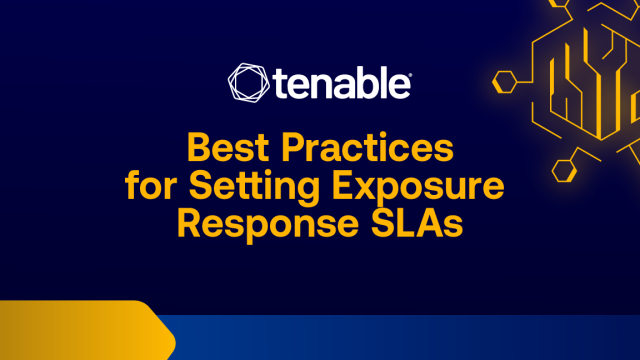If You Only Have 2 Minutes: Best Practices for Setting Exposure Response SLAs
by nlqip

Keeping vulnerability management efforts focused on achievable goals is key to avoiding cybersecurity team burnout. Here’s how exposure response workflows and SLAs can help.
As organizations grow in the digital age, vulnerability management has become a vital cybersecurity practice. But managing vulnerabilities effectively means more than just identifying potential issues; it’s about setting priorities that align with your organization’s goals and resources. A robust exposure response program elevates this process by creating comprehensive, actionable workflows that prioritize based on real-world impact rather than just risk scores or vulnerability counts. This approach shifts vulnerability management from a reactive scramble into a proactive, sustainable strategy, driven by clear accountability and performance metrics.
Exposure response workflows help teams prioritize risks based on impact and urgency. But prioritizing isn’t enough on its own — effective exposure response requires a practical approach to execution, which is where service level agreements (SLAs) make the difference.
Setting the pace: How SLAs guide effective exposure response
A crucial part of exposure response is establishing SLAs. Unlike traditional methods that rely on cumulative risk scores or vulnerability counts, SLA-based workflows measure performance by individual campaigns and specific accountability metrics. This approach prevents “learned helplessness,” where constant urgency can overwhelm teams and make the workload feel insurmountable.
Managing SLAs for achievable goals
SLAs help teams focus on attainable goals by defining what ‘critical’ or ‘high’ means based on your organization’s risk appetite, using Common Vulnerability Scoring System (CVSS) or Tenable Vulnerability Priority Rating (VPR) score ranges as benchmarks. This approach reduces the count of past-due critical and high vulnerabilities to zero instead of attempting to fix every issue at once — even if not every vulnerability is resolved immediately.
Moreover, SLAs offer flexibility for specific needs. Industry requirements, such as Payment Card Industry Data Security Standard (PCI-DSS) compliance, may necessitate stricter SLAs for certain areas. Exposure Response in Tenable Vulnerability Management allows teams to set customized SLAs in these contexts without disrupting the overall program.
Moving forward with exposure response
By establishing realistic SLAs, teams can maintain focus and ensure that critical vulnerabilities are addressed promptly, preventing chaos and inefficiency.
For a deeper dive into these concepts, check out the video below.
Learn more

Dave Farquhar
Dave Farquhar has over 30 years of IT expertise and serves as a Customer Success Engineer at Tenable. With a specialized focus on patching and vulnerability management for over 20 years, Dave has worked across higher education, non-profits, government and military, Fortune 20 companies, MSSPs and security vendors. Drawing on a wealth of hands-on experience, Dave is a trusted authority in building resilient systems and advancing security best practices.
Source link
lol
Keeping vulnerability management efforts focused on achievable goals is key to avoiding cybersecurity team burnout. Here’s how exposure response workflows and SLAs can help. As organizations grow in the digital age, vulnerability management has become a vital cybersecurity practice. But managing vulnerabilities effectively means more than just identifying potential issues; it’s about setting priorities that…
Recent Posts
- AWS Removes Financial Cap For Partners In MAP Program
- AWS re:Invent 2024: 7 New Partner Offers For SAP, AI Security And MAP Funding
- Interim Intel Co-CEO: ‘The Core Strategy Remains Intact’
- Meet New Intel Products CEO Michelle Holthaus: 5 Big Things To Know
- Amazon Nova AI Models And New ‘Killer Feature’ In Bedrock Are Huge AWS Partner Opportunities
